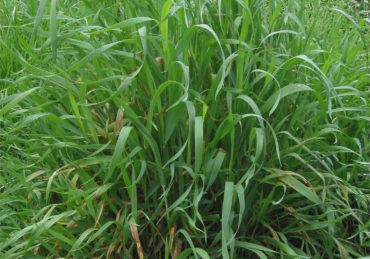You’ve noticed those pesky mushrooms popping up in your lawn, and you’re ready to tackle the issue head-on. By focusing on improving your lawn’s drainage and moisture control, you’re on the right track. Regular core aeration and dethatching will be your allies in this battle, as they enhance soil conditions and remove organic matter that mushrooms love. Curious about optimizing irrigation and managing debris to curb mushroom growth? There’s more to uncover.
Why Mushrooms Are Growing in Your Lawn in the First Place
Mushrooms in your lawn are primarily a result of high moisture levels, abundant organic matter, and shaded areas, all of which create an ideal environment for fungal growth.
Excessive moisture, often from prolonged rain or poor drainage, accelerates the reproductive cycle of fungi, causing mushrooms to sprout rapidly.
Furthermore, they feed on decaying organic materials like leaves and old roots, which are rich in nutrients, while shaded spots further promote their proliferation by maintaining damp conditions.
Easily hire the best lawn & landscape pros working in your neighborhood.
Mushrooms Love Moisture
When your lawn starts sprouting mushrooms, it’s a clear sign that the environment is ideal for fungal growth, primarily due to excessive moisture.
Mushrooms thrive in lawns with high moisture levels, often appearing after heavy rains or extended damp periods. Poor drainage or compacted soil can trap water, creating conditions ripe for their emergence.
Fungi remain hidden as mycelium underground until moisture triggers their surface fruiting. Addressing this requires improving drainage and avoiding overwatering.
Aerate your lawn to enhance water absorption and prevent waterlogging. Monitoring moisture levels and ensuring proper soil conditions can effectively curb mushroom proliferation.
Organic Matter and Shade
Although many factors contribute to mushroom growth, the abundance of organic matter and shade in your lawn creates particularly inviting conditions.
Mushrooms thrive on organic material, decomposing plant debris and old roots, which enriches the soil but also serves as their primary food source. Shaded areas retain moisture, limiting evaporation and creating the damp environment mushrooms love.
Mycelium, the underground network of fungi, persists as long as organic material is available. To reduce mushroom growth, regularly remove excess organic debris and enhance sunlight exposure.
Improving lawn drainage will decrease moisture retention, further discouraging mushrooms from making your lawn their home.
Are Mushrooms in Your Lawn Dangerous or Just Annoying?
Mushrooms in your lawn can indicate a healthy soil ecosystem, as they play an essential role in decomposing organic matter and enriching the soil with nutrients.
However, not all mushrooms are benign; some species can be toxic and pose a serious risk to pets and children if ingested.
It’s important to familiarize yourself with local mushroom varieties to effectively differentiate between harmless fungi and those that require careful removal.
When Mushrooms Signal a Healthy Soil
If you’ve noticed mushrooms sprouting in your lawn, don’t immediately reach for a fungicide; these fungi often signal that your soil is robust and teeming with organic material.
Mushrooms growing in your yard are a sign of nutrient-rich soil, benefiting your garden ecosystem. They decompose organic matter, releasing nutrients that enhance soil fertility.
Consider these points:
- Mushrooms thrive on decomposing organic material.
- They play an essential role in nutrient cycling.
- Their presence often indicates healthy, fertile soil.
- Moist conditions can trigger their appearance but don’t always reflect lawn issues.
Appreciating their ecological role can transform annoyance into understanding.
A Word on Poisonous Species
While your lawn may seem unthreatened by the presence of mushrooms, it’s important to recognize the potential dangers lurking among them. Many mushrooms are harmless, but some are highly poisonous, posing serious health risks if ingested.
Accurate identification is vital, as the vast diversity of mushrooms includes thousands of species. Poisonous mushrooms can cause symptoms ranging from gastrointestinal distress to severe liver damage.
Even skin contact with certain toxic varieties might result in allergic reactions or irritations. Always wear gloves when handling them and make certain pets avoid unfamiliar mushrooms, as they can suffer significant health issues from ingestion.
Easily hire the best lawn & landscape pros working in your neighborhood.
5 Smart Strategies to Get Rid of Mushrooms in Your Lawn
To effectively combat mushrooms in your lawn, start by improving drainage through core aeration, which enhances soil oxygenation and reduces water retention.
Regular dethatching will remove organic material that serves as a food source for fungi, while promptly mowing and removing visible mushrooms prevents spore spread.
Furthermore, reduce shade and excess moisture by trimming overgrown areas, and apply fungicides, both natural and chemical, with precision to manage persistent infestations.
1. Improve Drainage with Core Aeration
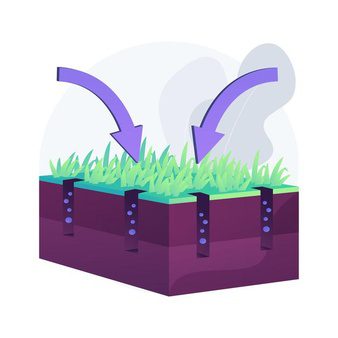
Core aeration is one of the most effective techniques you can employ to improve lawn drainage and curb mushroom growth. By removing small plugs of soil, core aeration enhances water and air penetration, directly addressing issues of soil compaction and excess moisture.
This process not only fosters robust root growth but also optimizes the lawn’s oxygen intake, creating an environment less favorable for mushrooms.
Implementing core aeration aids:
- Improve drainage by reducing waterlogging.
- Promote healthier grass through increased root oxygen.
- Decrease soil compaction, enhancing soil structure.
- Mitigate mushroom growth by eliminating excess moisture.
Regular core aeration guarantees a vibrant, mushroom-free lawn.
2. Dethatch to Remove Fungal Food Sources
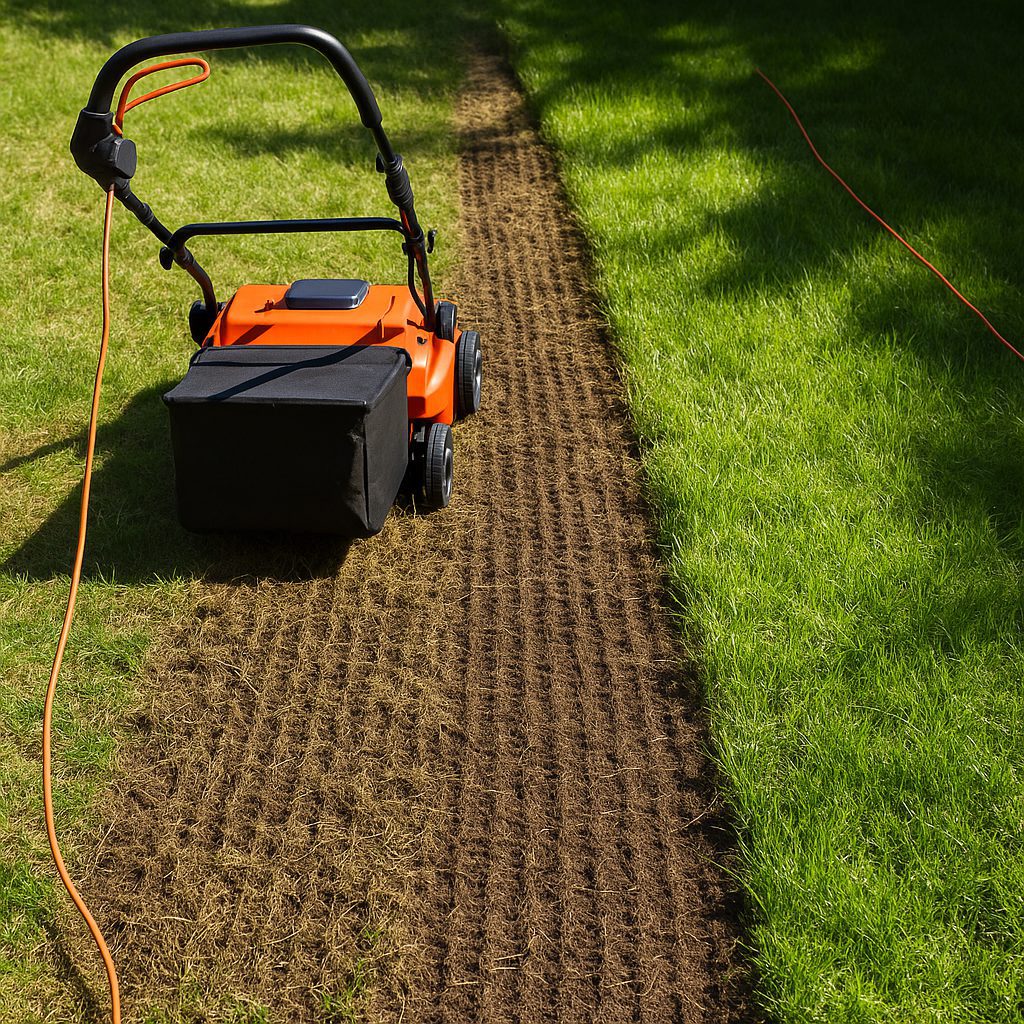
Even though dethatching might seem labor-intensive, it’s essential for maintaining a healthy lawn and controlling mushroom growth.
By removing the layer of thatch, composed of dead grass, roots, and organic material, you’ll reduce the moisture retention that mushrooms thrive on. Thatch thicker than half an inch can be a significant fungal food source, leading to unwanted mushroom proliferation.
Regular dethatching not only improves air circulation and water penetration but also fosters a balanced ecosystem in your lawn. This practice minimizes organic material that supports mushrooms and encourages healthier, more resilient grass growth, ultimately creating an environment less favorable for fungi.
3. Mow and Remove Mushrooms Promptly

While mowing the lawn might seem like a routine task, it plays an essential role in managing mushroom growth when executed correctly. By mowing, you can chop mushrooms into smaller pieces, which speeds up decomposition and reduces visibility.
To effectively remove mushrooms, follow these guidelines:
- Use a sharp mower blade to guarantee clean cuts and minimize stress on the lawn.
- Regularly inspect the lawn for new mushrooms post-mowing and promptly remove them.
- Dispose of chopped mushrooms in a sealed bag to prevent spore spread.
- Combine mowing with other practices like aeration to create unfavorable conditions for mushroom growth.
4. Reduce Shade and Moisture
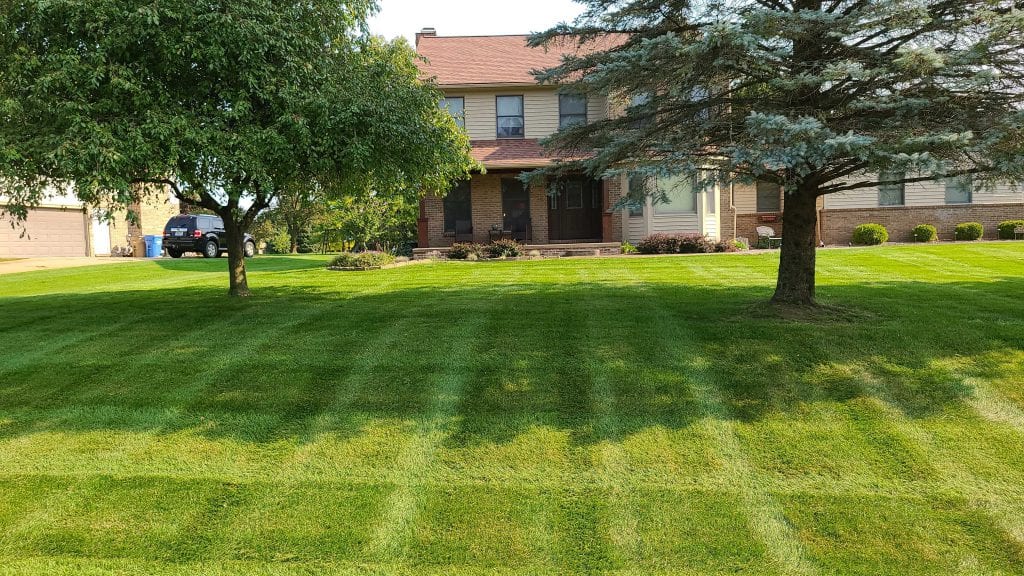
After efficiently managing mushrooms through mowing, it’s time to address the underlying environmental factors that encourage their growth.
Start by reducing shade, trim trees and shrubs to allow more sunlight to reach your lawn. This sunlight exposure decreases the moisture levels mushrooms love.
Improve soil drainage by aerating regularly, which helps prevent waterlogging. Remove organic debris like leaves and branches to limit nutrients that mushrooms feed on.
Adopt smart irrigation practices; water only when necessary to avoid excessive moisture.
5. Use Fungicides with Care (Natural & Chemical Options)
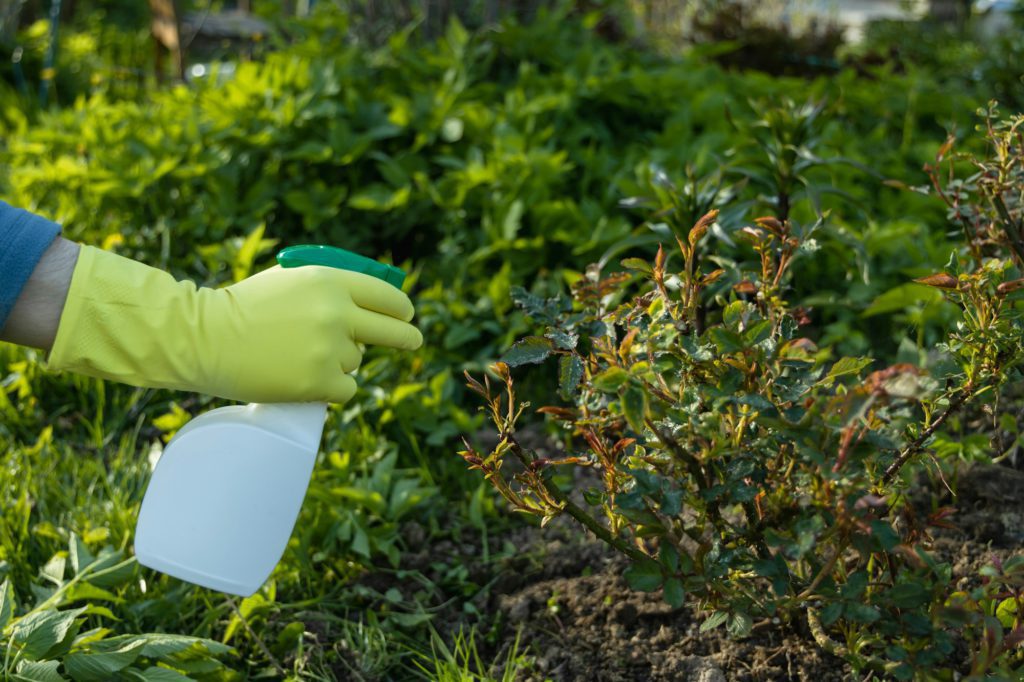
Fungicides offer a powerful tool for controlling mushrooms in your lawn, but their use requires precision and care.
Apply fungicides during dry weather to guarantee they penetrate the soil effectively, targeting the organic material mushrooms feed on.
Follow these guidelines:
- Read product instructions to prevent damage to your lawn.
- Monitor the lawn after application to detect adverse effects on grass health.
- Consider natural options like vinegar or baking soda mixtures for an eco-friendly approach.
- Reapply as needed, based on monitoring results.
Integrating these strategies helps manage mushrooms without compromising your lawn’s ecosystem.
Can You Stop Mushrooms from Growing Altogether?
You can’t completely stop mushrooms from growing in your lawn, but you can considerably reduce their occurrence by prioritizing lawn health.
Focus on proper irrigation, regular aeration, and dethatching to create unfavorable conditions for fungi.
Seasonally, adjust your lawn care practices to guarantee ideal sunlight exposure and minimal organic debris, keeping your yard as fungi-free as possible.
Lawn Health is the Best Defense
While you can’t completely prevent mushrooms from appearing in your lawn, maintaining ideal lawn health is your most effective strategy against their proliferation.
Through thorough lawn care, you can discourage mushroom growth by managing:
- Irrigation: Proper watering reduces excess moisture.
- Mowing: Regular cutting controls dampness and promotes grass health.
- Aeration: Enhances drainage and oxygen flow, reducing water retention.
- Thatch Control: Dethatch when organic material exceeds half an inch.
Trim trees and shrubs to increase sunlight exposure, reducing shaded areas favorable to mushrooms.
Accept some mushroom presence as a sign of healthy soil, focusing on fostering overall lawn health.
Seasonal Tips to Keep Your Yard Fungi-Free
Even though mushrooms are a natural part of the lawn ecosystem, strategic seasonal practices can greatly curb their growth.
Start by aerating your lawn regularly to improve drainage and minimize moisture retention, which mushrooms love. Prune trees and shrubs to increase sunlight exposure, reducing shady, damp areas.
Removing organic debris like fallen leaves and old stumps eliminates food sources for fungi. Stick to a consistent mowing schedule to prevent mushrooms from maturing and spreading spores.
Monitor soil moisture closely to avoid overwatering, as maintaining balanced hydration is essential. These steps create a less inviting environment for mushrooms in your lawn.
Want Help to Get Rid of Mushrooms in Your Lawn? LawnGuru Can Make It Easy
If you’re struggling with persistent mushrooms in your lawn, LawnGuru offers a detailed solution tailored to tackle this common issue.
We identify the root causes, such as excess moisture and organic material, to improve lawn health. Our providers services focus on:
- Aerating the lawn to enhance drainage and reduce moisture.
- Establishing regular maintenance schedules to minimize organic debris.
- Providing advice on trimming trees for better sunlight exposure.
- Guiding you in monitoring soil health for balanced mushroom management.
LawnGuru’s extensive approach guarantees a vibrant lawn while respecting the ecological role of fungi.
Get professional help to maintain a healthy, mushroom-free lawn.

